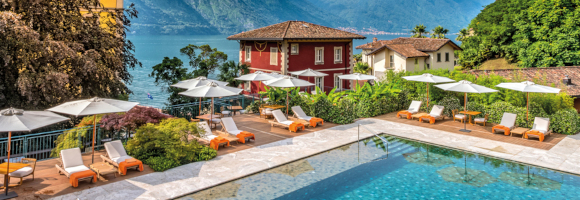The Bolshoi Ballet
The Bolshoi Ballet, also spelled Bolshoy Ballet, (Russian: “Great Ballet”), foremost ballet company of Russia(and the Soviet Union), famed for elaborately staged productions of the classics and children’s ballets that preserve the customs of 19th-century classical dance. The Bolshoi Ballet took that name in 1825, when the new Bolshoi Theatre in Moscow took over the ballet company of its predecessor, the Petrovsky Theatre, that had been established since 1776. The company’s style, later called “the Moscow style,” progressively developed, it became more spontaneous and was influenced more by Russian folklore than the traditional style which was the hallmark of the St. Petersburg companies. Throughout the 19th century, such prominent choreographers as Marius Petipa, Carlo Blasis, and Arthur Saint-Léon staged productions at the Bolshoi Theatre. After a period of decline at the end of the 19th century, Aleksandr Gorsky was appointed maître de ballet in 1900. He once again moulded a first-rate company and introduced the realism in scenery and costume that has since characterized the group’s productions. By the 1960s the Bolshoi Ballet was one of the world’s leading ballet companies. Yuri Grigorovich was the company’s artistic director from 1964 to 1995. The Bolshoi ballet school has formally been known since 1961 as the Moscow Academic Choreographic School.Repertoire
- A Hero of Our Time, Yuri Possokhov
- A Legend of Love, Yuri Grigorovich
- Anna Karenina, John Neumeier
- Anyuta, Vladimir Vasiliev
- Apollon Musgate, George Balanchine
- Carmen Suite, Alberto Alonso
- Coppelia, Marius Petipa and Enrico Cecchetti; Revived by Sergei Vikharev
- Don Quixote, Marius Petipa and Alexander Gorsky; Revived by Alexei Fadeyechev Etudes, Harald Lander
- Forgotten LandFrank Bridge Variations, Hans van Manen
- Giselle, Jean Coralli and Jules Perrot; Version of Yuri Grigorovich
- Ivan the Terrible, Yuri Grigorovich
- Jewels, George Balanchin
- La Bayadere, Marius Petipa; Version of Yuri Grigorovich
- La Fille du Pharaon, Pierre Lacotte
- La Fille Mal Gardee, Alexander Gorsky; Version of Yuri Grigorovich
- La Sylphide, August Bournonville; Version of Johan Kobborg
- Lady of the Camellias (La Dame aux Camelias), John Neumeier
- Le Corsaire, Marius Petipa; Version of Alexei Ratmansky and Yuri Burlaka
- Nureyev
- The Nutcracker, Yuri Grigorovich
- Ondine, Vyacheslav Samodurov
- Onegin, John Cranko
- Raymonda, Marius Petipa; Version of Yuri Grigorovich
- Romeo and Juliet, Yuri Grigorovich
- Romeo and Juliet, Alexei Ratmansky
- Russian Seasons, Alexei Ratmansky
- Short Time Together, Paul Lightfoot and Sol Leon
- Spartacus, Yuri Grigorovich
- Swan Lake, Marius Petipa; Version of Yuri Grigorovich
- Symphony of Psalms, Jiri Kylian
- The Bright Stream, Alexei Ratmansky
- The Cage, Jerome Robbins
- The Flames of Paris, Vasily Vainonen, Version of Alexei Ratmansky
- The Golden Age, Yuri Grigorovich
- The Sleeping Beauty, Marius Petipa; Version of Yuri Grigorovich
- Taming of the Shrew, Jean-Christophe Maillot
 view history
view history
Brief History On 28 March (17 according to the old style) 1776, Catherine II granted the prosecutor, Prince Pyotr Urusov, the “privilege” of “maintaining” theatre performances of all kinds, including masquerades, balls and other forms of entertainment, for a period of ten years. And it is from this date that Moscow’s Bolshoi Theatre traces its history. The Bolshoi building, which for many years now has been regarded as one of Moscow’s main sights, was opened on 20 October 1856, on Tsar Alexander II’s coronation day. On 29 October 2002 the Bolshoi was given a New Stage and it was here it presented its performances during the years the Historic Stage was undergoing massive reconstruction and refurbishment. The reconstruction project lasted from l July 2005 to 28 October 2011. As a result of this reconstruction, many lost features of the historic building were reinstated and, at the same time, it has joined the ranks of most technically equipped theatre buildings in the world. The Bolshoi Theatre is a symbol of Russia for all time. It was awarded this honor due to the major contribution it made to the history of the Russian performing arts. This history is on-going and today Bolshoi Theatre artists continue to contribute to it many bright pages.
[contact-form-7 id=”20838″ title=”Ultimate Page Enquiry”]





